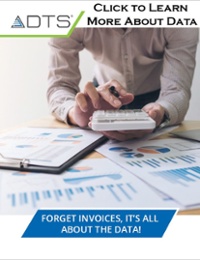Are you collecting, storing, and using the necessary data to ensure your tax calls are correct? If you’re not sure, you might want to see if your data can answer these three key questions…
 1. What is Being Purchased?
1. What is Being Purchased?
This is fairly simple, or so it would seem. Did you know a good portion of companies can only see that something was purchased, but they can’t tell specifically what it was? I know that seems ridiculous, but I assure you we see it all the time. Often, the reason is because Accounts Payable isn’t required to key line-level detail into their payment system. However, it sometimes happens when line-level detail is keyed but then rolled up, or consolidated, for other business purposes. Regardless of the reason, you need to ensure all purchase information is collected and stored at the detailed line level. It might seem obvious, but this is an essential step that is too often ignored!
2. Where is it Going?
Once you can safely determine what is specifically is being purchased, you need to know where the transaction occurred. For smaller companies, this is usually simple, as there is often only one location. However, larger companies are another story. The answer gets exponentially more complicated when there are multiple locations, companies, business units, etc. As such, Cost Center, Profit Center, and Buyer Ids tend to become invaluable to help solve the mystery.
 3. How is it Going to be Used?
3. How is it Going to be Used?
It seems like knowing what is being purchased and where it’s going should be enough to drive an accurate tax result, right? Unfortunately, no. Companies operating in “exemption-rich” industries still need to know more! They need to know how the purchase going to be used. Again, this seems obvious; after all, a hammer is used for hammering, a computer is used for computing, and a drill is used for drilling. It almost seems like the “how” is right there in the name. Yet, computers can be used for accounting, manufacturing, or organizing human resources information. Even less-complicated tools, like hammers and drills, can be used at various stages of production, or can be incorporated into a piece of equipment, or can simply be part of a tool box in a supply closet. The purpose may not be so obvious, so your data needs to reflect how the item will be used so you can tax it accordingly.
 Running through this three-question process will ultimately help you determine if you have good data. If the data you’re leveraging for your tax calls can answer each of these questions, you’re likely on the right track and ahead of the curve. But if it can’t, you may be overpaying your tax obligation and/or taking on unknown risks!
Running through this three-question process will ultimately help you determine if you have good data. If the data you’re leveraging for your tax calls can answer each of these questions, you’re likely on the right track and ahead of the curve. But if it can’t, you may be overpaying your tax obligation and/or taking on unknown risks!

